I’m behind on my lesson updates! There’s been a bit of internet drama during the past two weeks, but the important thing is that I have a connection now and will (hopefully) continue to have one. Luckily, classes have been pretty slow averaging one to two demos/practicals per week. After this mini-massive update, everyone will be almost up to speed.
These past four lessons are actually quite intertwined and related to each other. We’ve been combining different techniques to create a range of desserts and pastries. In Lesson 6 we learned how to make pâte à choux or choux pastry, an important base for many French pastries such as chouquettes, éclairs, choux chantilly, as well as the St. Honoré and Paris-Brest in Lesson 8. The dacquoise, a meringue based almond sponge cake, from Lesson 7 is also featured in the tarte meringuée aux poires caramelisées in Lesson 9, while the praline buttercream used to frost the daquoise is similar to the filling of the Paris-Brest. Furthermore, the pear tart from Lesson 9 is essentially the same as the tarte aux pommes but with pears, a partially almond pâte sucrée (also used as the base of the St. Honoré but without almond meal), and a meringue top. Confused yet? To summarize: pâte sucrée, pâte à choux, and meringue have been the main areas of focus and are important to master. During the various practicals, we made chouquettes, chocolate eclairs, a dacquoise, St. Honoré, and a meringue topped pear tart.
Chouquettes are choux puffs baked sprinkled with big sugar crystals. They are a favorite among little kids and are found year round in most patisseries. Same with eclairs, which are offered most often in two flavors: chocolate and coffee. As with much of what we’ve learned so far, the recipe isn’t difficult, but difficult to master. The key is to know the small details that will improve a dessert from being good to spectacular. To secret to choux pastry is to cook the dough until just the right amount of liquid has evaporated, which is when the dough stops to stick on the sides of the spatula and pot. I had the most trouble piping the eclairs to the right size. Mine were a bit skinny, or as the chef said “were on a diet.” However, icing the eclairs after filling them with pastry cream was probably the trickiest part. They had to be glazed nice and slick by using a perfectly curved finger, which turned out to be quite a messy job.
Dacquoise is made up of meringue based almond sponge layers filled with praline buttercream. Up until this point I was scared that I wouldn’t be able to whip up my egg whites…and I was right. Luckily, I wasn’t the only one. I almost made it, I would say to soft peaks, but the last push to make them stiff was finished by the chef. Whisking 8 egg whites is quite the workout! We all joked that by the end of summer we would have bulging biceps, but only on our dominant arm. The cake was decorated with a marzipan flower, which were fun but irrelevant visually and taste wise. According to the one authentic French girl in our class, marzipan is presented with this cake. It probably was included to introduce to us the ingredient and start learning flower making skills.
St. Honoré is a dessert assembled with three main parts: a sweet pastry base, choux puffs dipped in caramel, and chantilly cream. I actually made this a couple months ago for my dad’s birthday, but never wrote about it because the pictures came out too dark. LCB’s recipe and the one I made from Paris Sweets have one major difference: pastry cream. The recipe from Paris Sweets used pastry cream instead of chantilly, and not only was the center filled with cream, but also the puffs. I preferred that version better, and according the French classmate is usually made that way. However, overall, the one I made during class came out much better (and faster). It took me something like 4 or 5 hours to complete my dad’s cake, whereas this one took about 2 1/2. The chantilly piping was crap, but it was mostly due to the sweltering summer heat and temperate refrigerators.
The pear tart was essentially a combination between the apple tart and dacquoise lessons. After filling the tart shell with caramelized pears, we carefully piped dacquoise batter on top. Taste wise I prefer the tarte aux pommes for its simplicity and rusticity. The pear tart has too much going on with the meringue sponge top, raisins, currents, sliced almonds, and pears. However, it was good practice to go over making a tart shell and whipping whites for the meringue. This time I made it to the end, but we also used less egg whites.
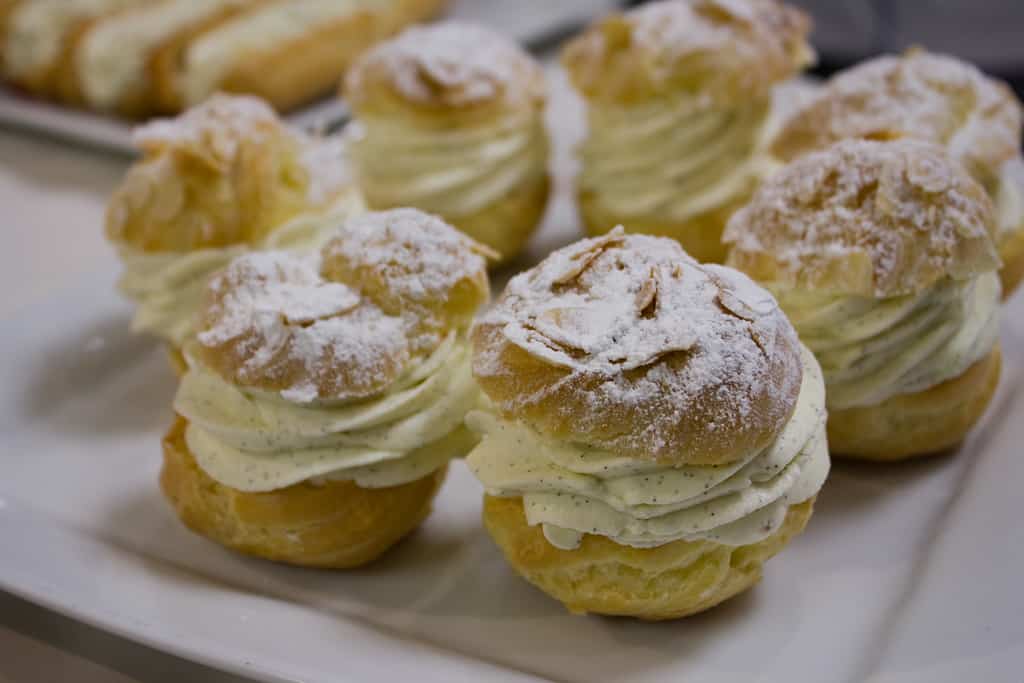
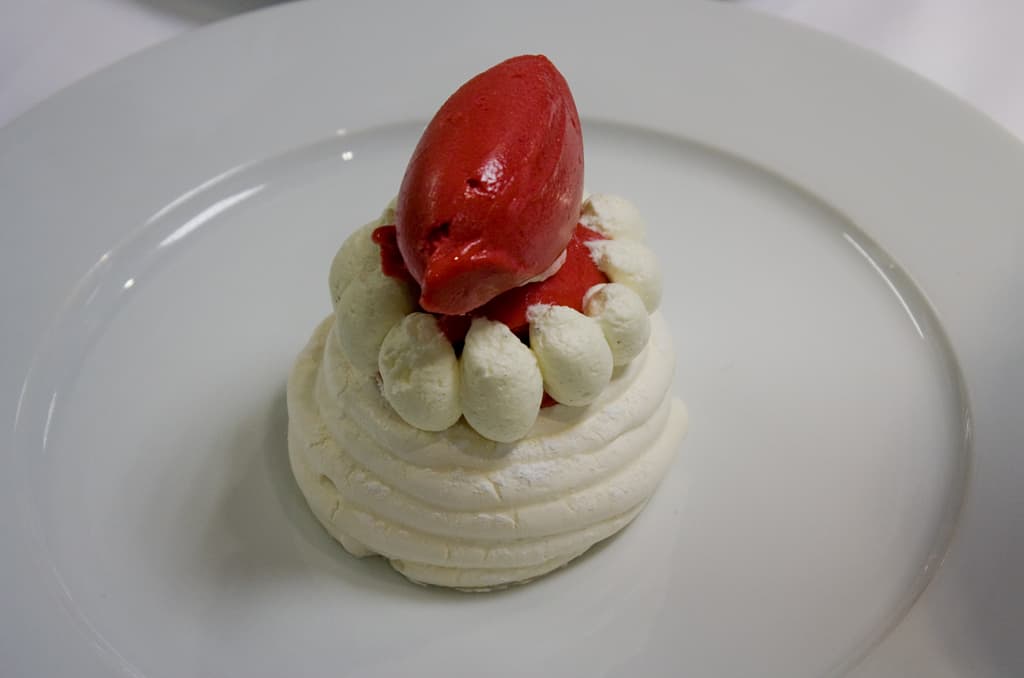
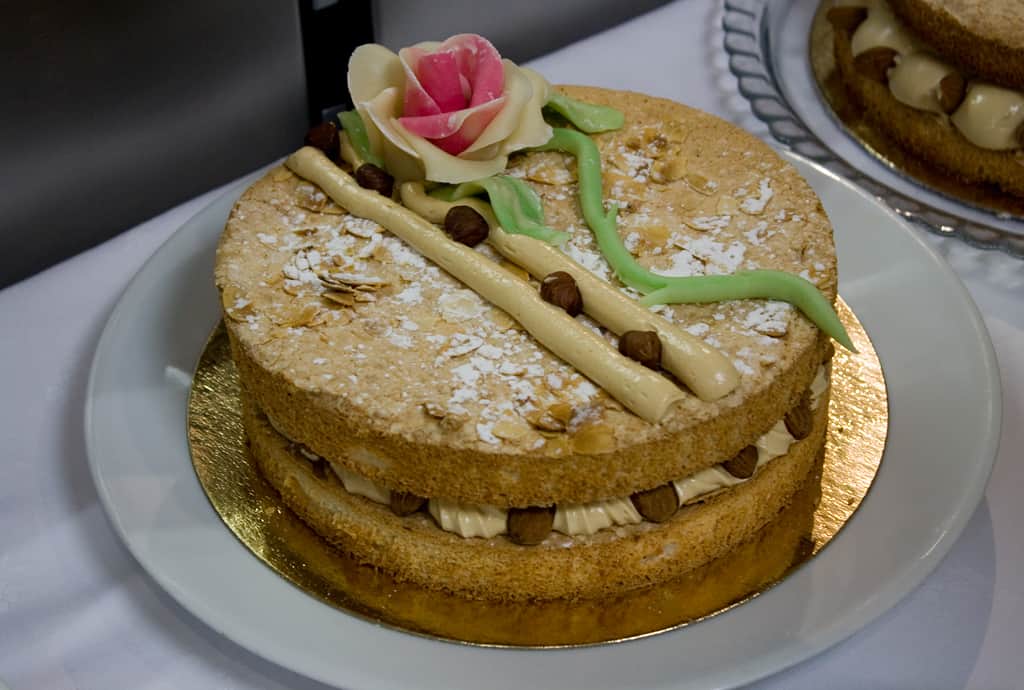
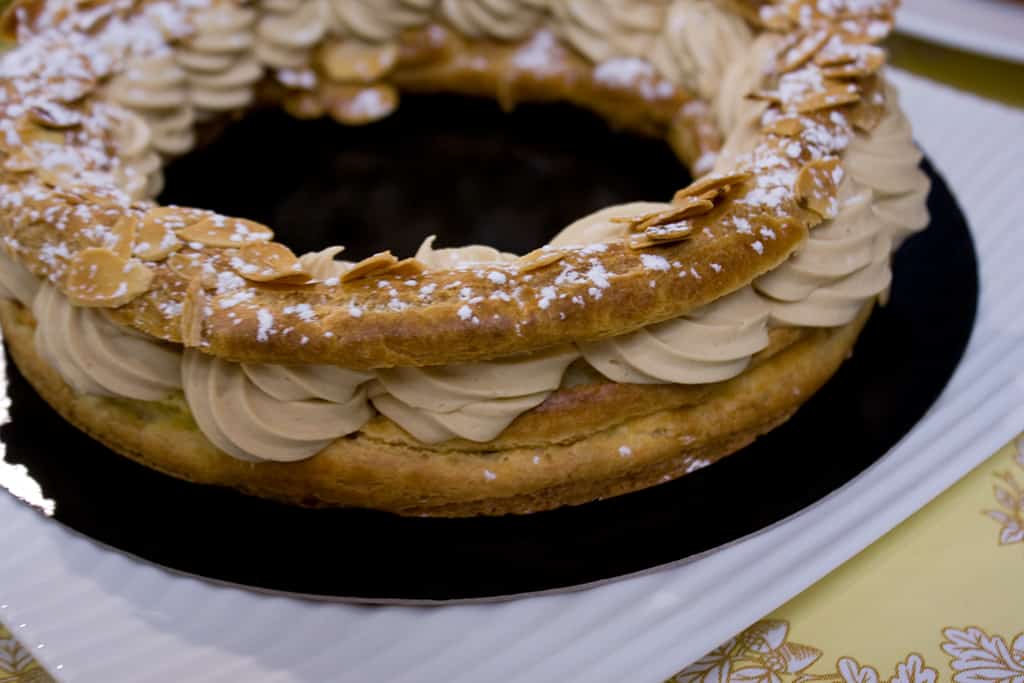
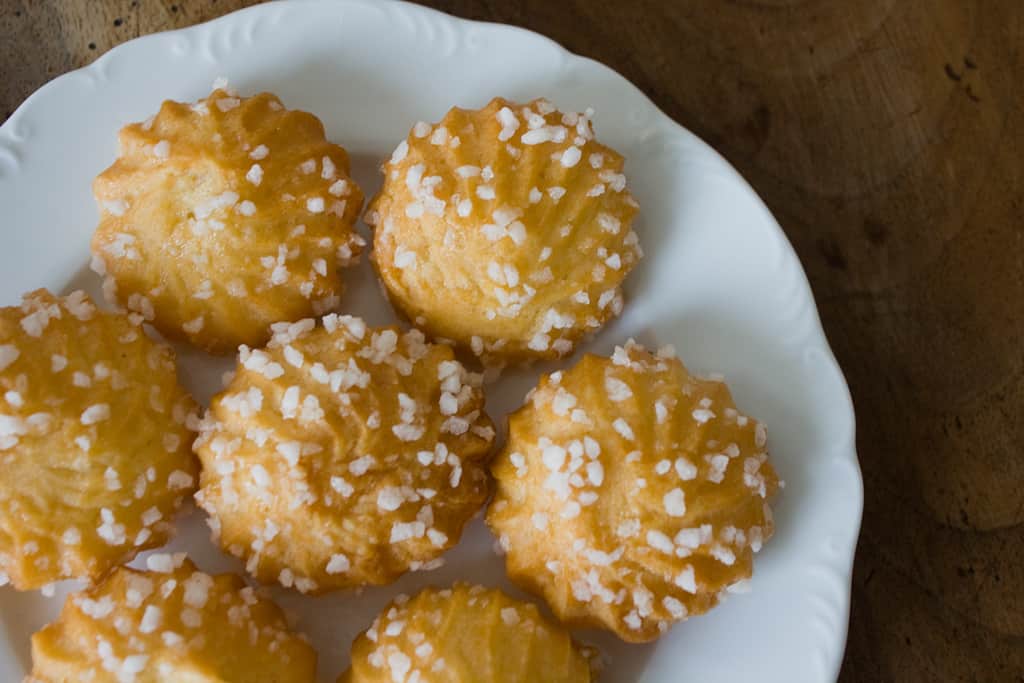
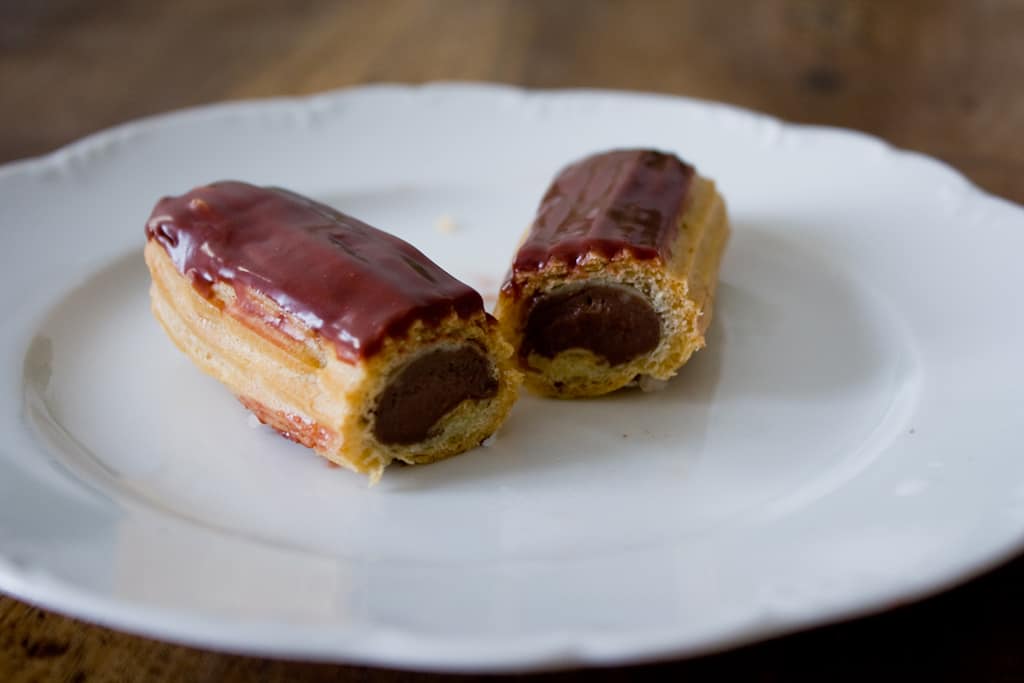
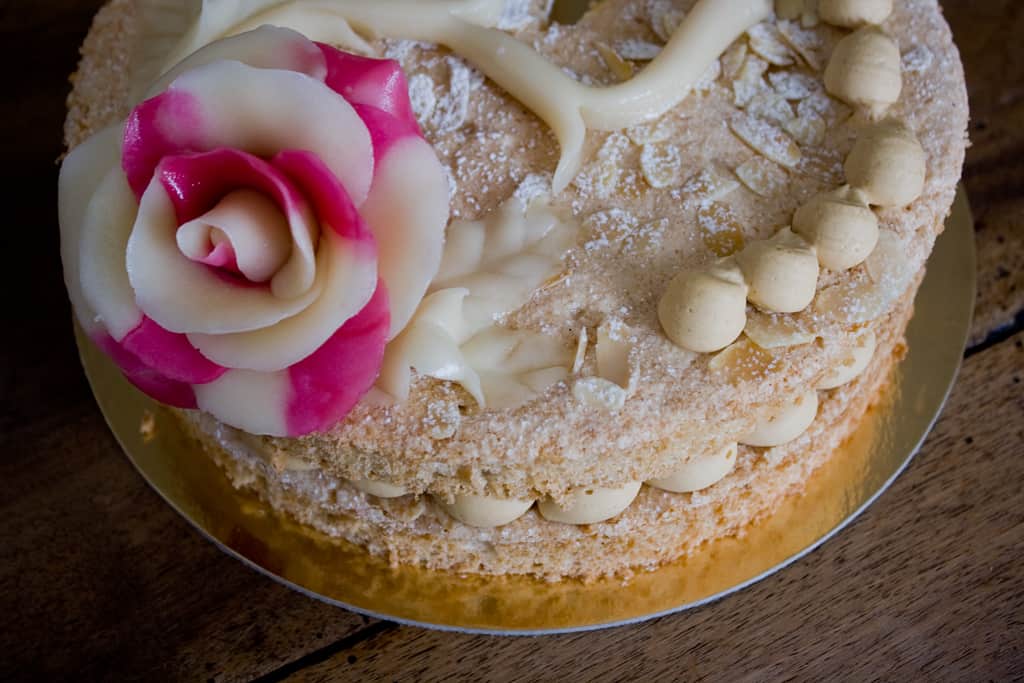
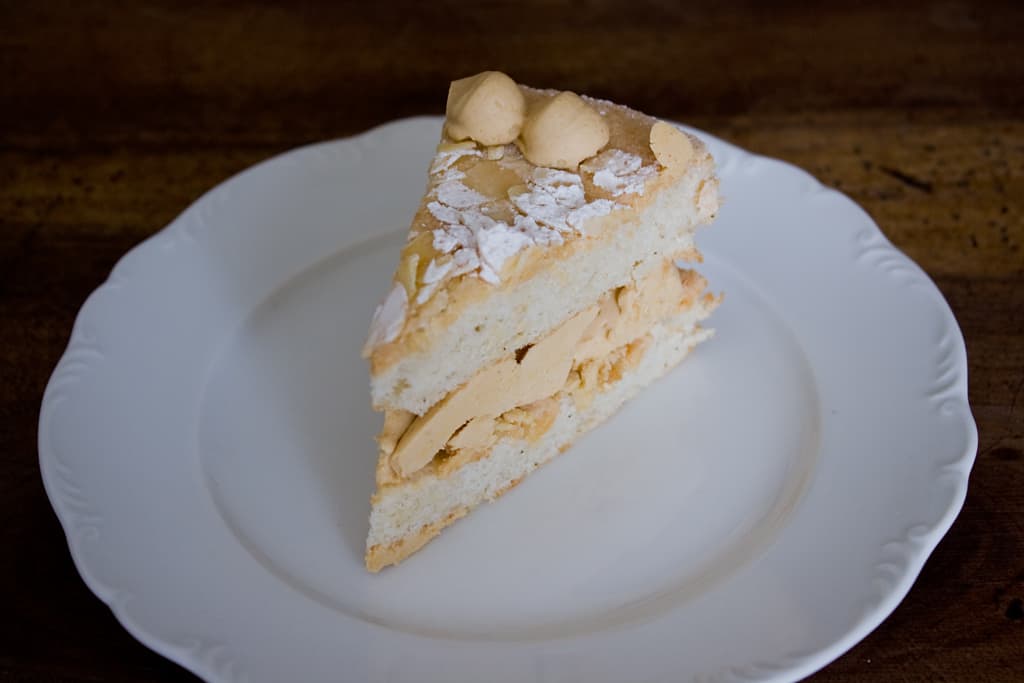
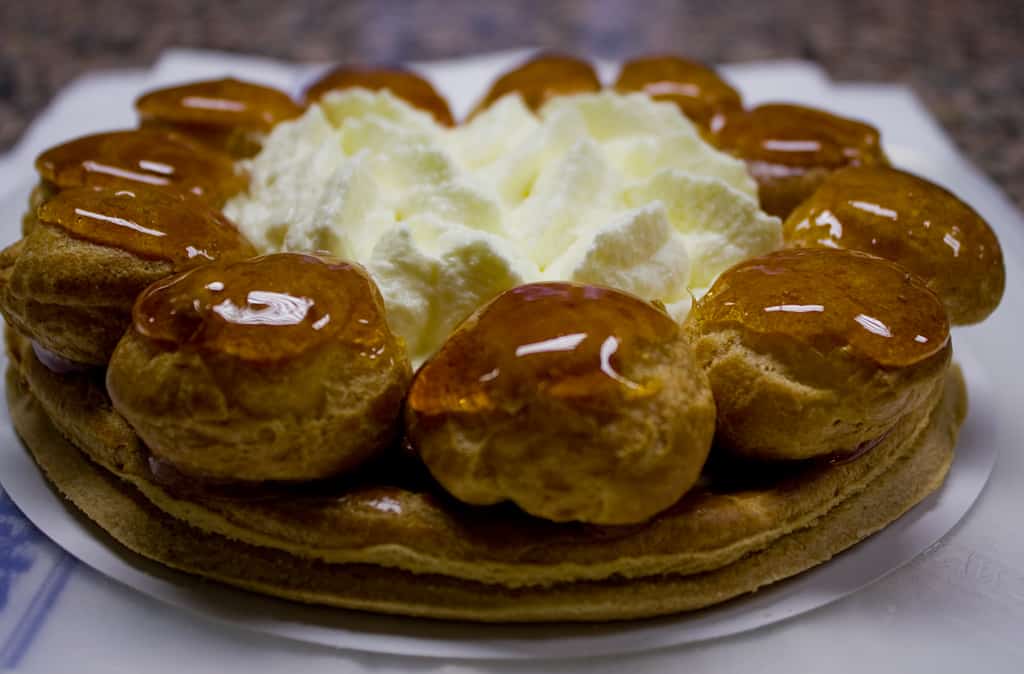
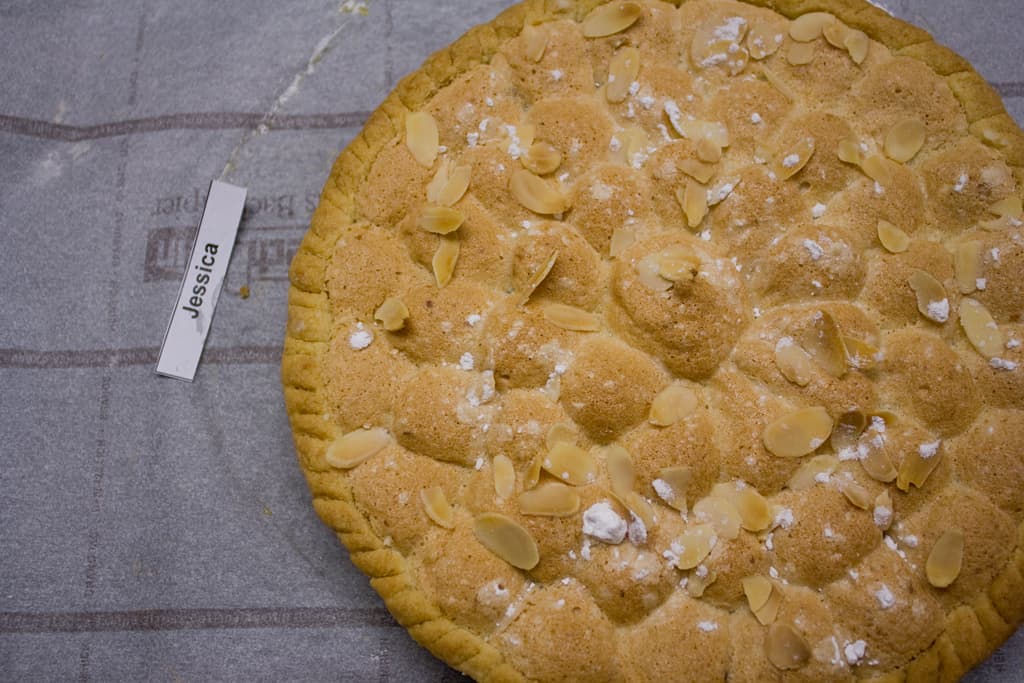
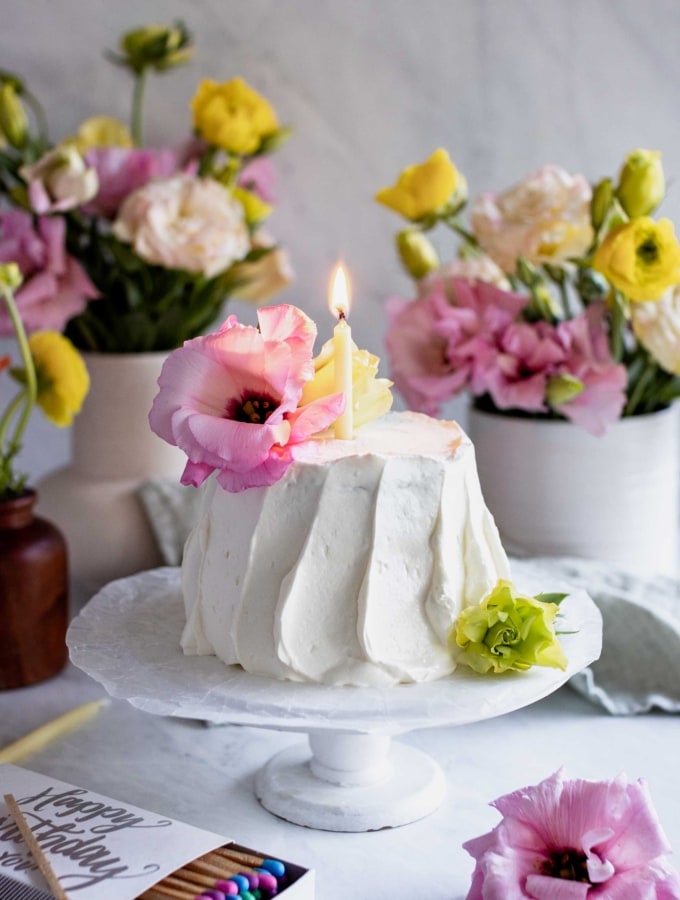
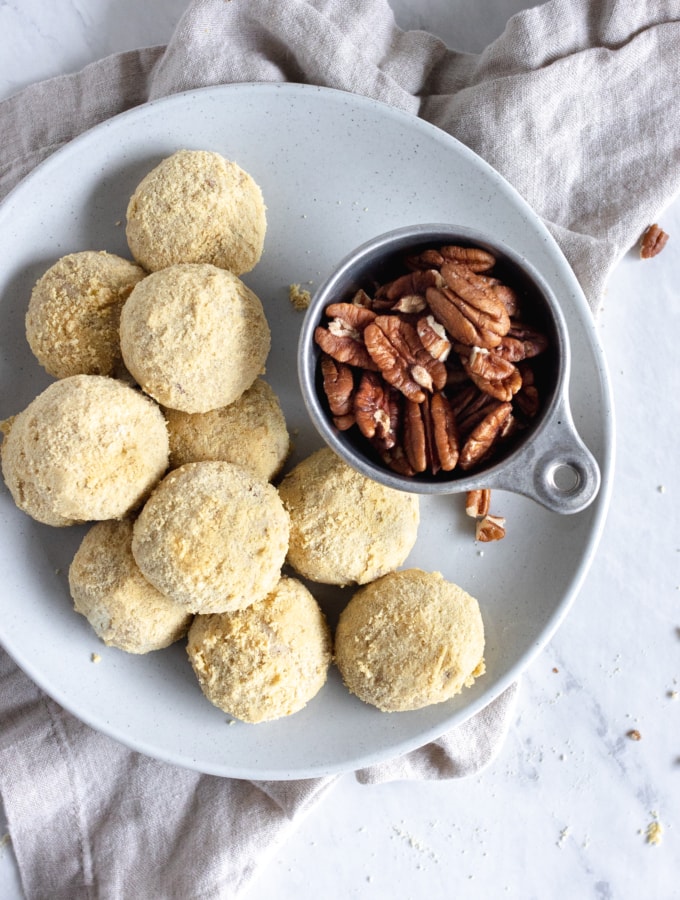
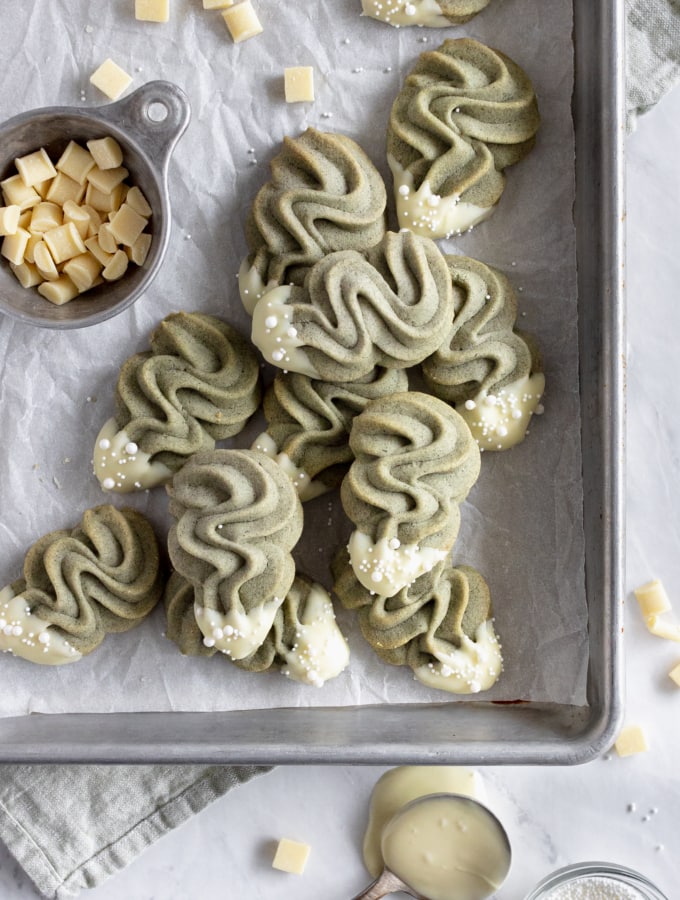
babycakes says
yum everything looks so good! some of these cakes do have a lot going on like the pear tart n dacquoise. and the rose for me doesnt seem to fit that well with the cake but im very proud of your rose, it turned out very nicely!! i kinda like this massive update seeing all the pastries in one go! hahah i die over those choux cream puffsssssss
Andi says
so fancy! I like the first dessert.
A Little Yumminess says
Looks so YUMMY….I am envious! Good for you 🙂
Emily says
Everything looks amazing! Especially the choux puffs dipped in caramel, omg…
Dina says
wow this all looks divine!
bob says
babycakes is your number 1 fan!
Hanan says
heeyyyysss!!!!!! LOVE the photos!!!!!!
if you dont mind me asking what type of buttercream did you use for the choux pastery based desserts 😀 is it swiss???
Jessica says
Hanan- Paris-Brest, the ring choux pastry, is made with praline buttercream. The other are made with chantilly except the eclairs, which are filled with pastry cream.
Hanan says
awesoommme!!! your soo luucky your at le cordon bleu <3
lynne says
These look great, post recipes if you can…. or copykats if close..